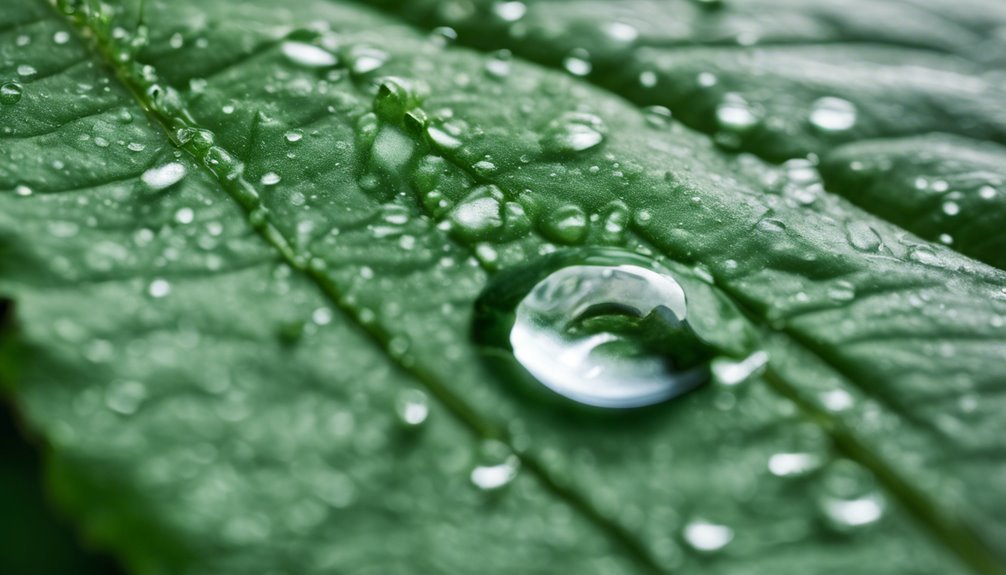What Are the Negetive Effects of Having Water Softner?
While many believe water softeners are a straightforward solution to hard water problems, they can actually introduce several negative effects that deserve your attention. You might not realize that increased sodium levels in softened water can pose health risks, particularly for those with hypertension. Furthermore, there are environmental and plumbing concerns that could lead to costly maintenance down the line. Understanding these impacts is essential, especially if you're considering installing a system in your home. What other hidden drawbacks might surprise you?
Key Takeaways
- Softened water increases sodium intake, which can exacerbate hypertension and cardiovascular issues, posing health risks over time.
- The removal of essential minerals like calcium and magnesium from water can negatively impact overall health.
- Water softeners contribute to environmental saltwater pollution, disrupting freshwater ecosystems and harming aquatic life.
- Increased sodium can lead to corrosion of metal pipes, reducing plumbing lifespan and increasing maintenance costs.
- Using softened water affects soil health by disrupting nutrient absorption, leading to poor plant growth and reduced agricultural productivity.
Increased Sodium Levels
How does using a water softener impact your sodium intake? When you use a traditional ion-exchange water softener, it typically replaces calcium and magnesium ions in your water with sodium ions. This process effectively softens your water but also increases the sodium levels you consume.
For those who already monitor their sodium intake for health reasons, this change can have significant implications. A typical water softener can add approximately 7 to 8 mg of sodium per grain of hardness removed per gallon of water.
If you're consuming several gallons of softened water daily for drinking, cooking, or even washing vegetables, your sodium intake can rise quickly. Increased sodium intake can lead to various health implications, particularly for individuals with hypertension or cardiovascular issues.
Excess sodium can exacerbate these conditions by promoting fluid retention and increasing blood pressure. As a result, if you rely on a water softener, it's essential to take into account your overall sodium consumption from all sources.
Monitoring your intake and possibly exploring alternatives, like potassium-based water softeners, may help mitigate these health risks.
Environmental Concerns
When you use water softeners, you contribute to saltwater pollution, as excess sodium from the regeneration process can leach into local waterways.
This not only harms aquatic ecosystems but also raises concerns about resource depletion, particularly in areas already facing water scarcity.
Understanding these environmental impacts is vital for making informed choices about water treatment options.
Saltwater Pollution Issues
Water softeners, while effective at improving the quality of household water, contribute to saltwater pollution that poses significant environmental challenges. When these systems regenerate, they discharge brine, a concentrated salt solution, into wastewater systems, which often leads to rising salinity levels in local water bodies.
This increase in salinity can have detrimental effects on the environment, particularly concerning saltwater intrusion and its impact on aquatic ecosystems.
- Elevated salinity levels can disrupt freshwater habitats.
- Saltwater intrusion may compromise drinking water supplies.
- Aquatic organisms may struggle to adapt to rapid changes in salinity.
- Increased salinity can lead to the proliferation of harmful algae blooms.
As you consider the implications of your water softener, it's crucial to recognize that the brine released can harm not only the immediate environment but also the broader ecological balance.
The impact on aquatic ecosystems can be severe, leading to the loss of biodiversity and altering the natural habitats of sensitive species. By understanding these saltwater pollution issues, you can make more informed decisions about water softening solutions and their environmental ramifications.
Resource Depletion Risks
The reliance on water softeners brings with it significant resource depletion risks that merit attention. When you use a water softener, it typically requires large amounts of salt, which can contribute to resource scarcity in the regions where salt is harvested. This demand can lead to over-extraction of salt from the environment, disrupting local ecosystems and threatening the sustainability of these resources.
Moreover, the process of softening water can create an ecosystem imbalance, particularly in freshwater systems. The discharge of sodium-rich wastewater from softened water can alter the chemical composition of rivers and lakes, affecting aquatic life. This disruption can lead to decreased biodiversity, as sensitive species may struggle to survive in altered conditions.
You mightn't immediately see these impacts, but they accumulate over time, creating a ripple effect that extends beyond just your household.
To mitigate these risks, consider alternative water treatment solutions that are less resource-intensive or explore methods to reduce overall water hardness without relying solely on traditional water softening systems. Balancing your needs with environmental sustainability is essential for long-term resource management.
Plumbing System Issues
Plumbing system issues can arise from the installation of water softeners, impacting both the efficiency and longevity of your pipes. When you soften water, it often leads to an increase in sodium levels, which can exacerbate pipe corrosion. This corrosion can result in a range of problems that require plumbing repairs, including leaks and reduced water pressure.
Here are some key concerns you should be aware of:
- Increased risk of corrosion in metal pipes
- Potential for reduced lifespan of plumbing fixtures
- Higher likelihood of leaks and water damage
- Increased maintenance costs due to frequent repairs
As sodium replaces calcium and magnesium in softened water, it can create a more corrosive environment. Over time, this can weaken your plumbing infrastructure, particularly in older homes with aging pipes.
Consequently, you might find yourself facing unexpected plumbing repairs that could have been avoided. Regularly monitoring your plumbing system and using appropriate materials can mitigate these risks, ensuring your water softener doesn't compromise your home's plumbing integrity.
Cost of Maintenance
Maintaining a water softener can lead to significant costs over time, especially when considering both routine upkeep and potential repairs.
You'll need to factor in the ongoing expenses of salt replacement, which can add up depending on your household's water usage and the service frequency of your unit. Regular maintenance is essential to guarantee peak performance, and service intervals typically range from six months to a year.
During these services, technicians may inspect and replace filters, resin beads, and other components, which contributes to repair costs. If your system experiences malfunctions, you might face unexpected expenses. Issues like valve failures or salt bridge formations can require immediate attention, leading to higher repair costs than routine maintenance.
Moreover, if you neglect regular servicing, you could end up with a system that's less efficient, potentially increasing your water and energy bills.
Impact on Drinking Water
While considering the costs associated with maintaining a water softener, it's important to examine how these systems can affect the quality of your drinking water.
Though water softeners can provide benefits, they also raise several concerns regarding drinking water safety and health implications.
- High sodium levels can lead to hypertension and other cardiovascular issues.
- Calcium and magnesium, which are beneficial minerals, get removed from the water.
- Softened water may leach lead from old plumbing, posing serious health risks.
- The disposal of brine can contribute to environmental problems, impacting water sources.
When you consume softened water, you're often ingesting higher sodium levels. This is particularly concerning if you're on a low-sodium diet or have specific health conditions.
Furthermore, removing essential minerals like calcium and magnesium may lead to deficiencies over time.
Moreover, if your plumbing contains lead, softened water can exacerbate leaching, leading to lead contamination.
These factors underline the significance of evaluating the impact of water softeners on drinking water safety.
Understanding these potential health concerns is vital for making informed decisions about water treatment options in your home.
Affects on Plant Life
When considering the impact of water softeners on plant life, it's essential to recognize that softened water can greatly alter soil chemistry and plant health.
Softened water typically contains higher sodium levels, which can negatively influence soil health. Excess sodium can lead to soil compaction and reduced permeability, making it difficult for plants to absorb water and nutrients effectively.
In addition, higher sodium concentrations can disrupt the balance of essential nutrients in the soil, affecting plant absorption. This imbalance can inhibit the uptake of critical nutrients such as calcium and magnesium, which are fundamental for plant growth and development. Consequently, plants may exhibit signs of nutrient deficiency, stunted growth, and overall poor health.
Furthermore, the alteration in soil chemistry can impact beneficial microorganisms that contribute to soil health. These microorganisms play an essential role in organic matter decomposition and nutrient cycling, both of which are crucial for sustaining plant life.
Without a healthy microbial community, your plants may struggle to thrive.
Reduced Water Pressure
When you install a water softener, you might notice a drop in water pressure throughout your home.
This reduction can stem from flow rate limitations inherent in the system and the potential for pipe clogging due to mineral buildup.
Understanding these factors is essential for maintaining ideal water flow while reaping the benefits of softened water.
System Installation Impact
Installing a water softener can greatly impact your home's water pressure. While softeners improve water quality, they can also lead to reduced pressure due to system compatibility issues and installation costs. It's important to take these factors into account before proceeding:
- Pipe size: Smaller pipes can restrict flow, leading to pressure drops.
- Location: The installation point affects how pressure is distributed throughout your home.
- System type: Different systems have varying flow rates and compatibility with existing plumbing.
- Maintenance: Regular upkeep is vital to maintain peak performance and pressure.
When selecting a water softener, verify it's compatible with your existing plumbing system. If not, you may face additional installation costs to modify your setup.
In some cases, a poorly installed system could exacerbate pressure issues, leading to further complications.
Being aware of these factors can help you make an informed decision. Ultimately, while the benefits of softened water are clear, the impact on water pressure shouldn't be overlooked.
Proper planning and installation can mitigate potential drawbacks and guarantee your household enjoys both quality water and adequate pressure.
Flow Rate Limitations
Flow rate limitations can considerably affect your home's water pressure, particularly after installing a water softener. When you introduce a water softener into your plumbing system, it may disrupt the natural flow rate. This flow rate regulation can lead to noticeable drops in water pressure, impacting your daily activities like showering and washing dishes.
Here's a quick overview of how flow rate limitations can affect your system:
| Effect | Description |
|---|---|
| Reduced Efficiency | Lower pressure can cause appliances to work harder, reducing overall system efficiency. |
| Inconsistent Performance | Fluctuations in pressure may lead to inconsistent water delivery, affecting multiple outlets. |
| Increased Wait Times | You may experience longer wait times for hot water, as pressure issues can delay heating. |
Understanding these flow rate limitations allows you to make informed decisions about your water softening system. Regular maintenance and adjustments can help mitigate these effects, ensuring you maintain a functional balance between water softening and pressure regulation. Ultimately, addressing these limitations will enhance your overall water experience at home.
Pipe Clogging Potential
Often overlooked, the potential for pipe clogging can substantially impact water pressure after a water softener is installed. As softened water interacts with existing minerals and debris in your plumbing, it may lead to build-up over time, which can restrict flow and reduce pressure.
- Increased mineral deposits
- Residual contaminants from old pipes
- Inefficient water flow
- Higher maintenance costs
To mitigate these issues, regular pipe maintenance is essential. You should conduct routine inspections and cleanings to prevent the accumulation of debris that can lead to clogging.
Implementing clogging prevention techniques, such as flushing your system periodically, can also help maintain ideal water pressure.
Moreover, consider the materials of your pipes. Older plumbing systems may be more susceptible to build-up, necessitating more frequent maintenance.
Potential Skin Reactions
How might water softeners affect your skin? While these systems are designed to improve water quality, they can inadvertently lead to potential skin reactions.
Water softeners typically replace calcium and magnesium ions with sodium or potassium ions. This change can affect your skin's pH balance, making it more susceptible to skin sensitivity.
If you have pre-existing skin conditions, such as eczema or psoriasis, the altered water composition may exacerbate symptoms. Increased sodium levels in softened water could lead to dryness and irritation, causing your skin to feel tight or itchy.
Additionally, some individuals may experience allergic reactions to the chemicals used in the softening process, such as chlorine or additives. These reactions can manifest as rashes, redness, or hives, particularly if you have sensitive skin.
It's crucial to monitor your skin's condition after using softened water and adjust your skincare routine accordingly. You might consider using gentle, hydrating cleansers and moisturizers to counteract any adverse effects.
Consulting a dermatologist can also provide personalized advice if you notice significant changes in your skin health after switching to softened water.
Frequently Asked Questions
Can Water Softeners Cause Issues With Septic Systems?
Yes, water softeners can affect septic systems. They increase sodium levels in wastewater, potentially disrupting the microbial balance essential for proper function. It's vital to take this impact into account when using water softeners in homes with septic systems.
Do Water Softeners Affect the Taste of Food?
Water softeners can subtly alter taste perception, enhancing some flavors while diminishing others. This culinary influence may surprise you, as softened water changes mineral content, impacting how ingredients interact during cooking, ultimately affecting your overall dining experience.
Are There Alternative Methods to Soften Water?
Yes, you can use alternatives like reverse osmosis or distillation to soften water. These methods maintain magnesium levels while reducing sodium content, ensuring healthier water without relying on traditional water softeners that introduce additional sodium.
How Does Hard Water Differ From Softened Water?
Isn't it fascinating how hard water effects your appliances and skin? Softened water benefits you by reducing scale buildup and improving soap efficiency, making your laundry cleaner and your hair shinier compared to hard water.
Can Pets Be Affected by Soft Water?
Soft water can affect pet health since it often contains higher sodium levels. If your pets consume significant amounts, it could lead to health issues like dehydration or increased blood pressure, so monitor their intake carefully.
Conclusion
In weighing the benefits of water softeners against their drawbacks, it's vital to recognize the hidden costs. While they promise improved lathering and reduced scale buildup, these advantages come at the expense of increased sodium levels and potential plumbing issues. You might enjoy softer water today, but tomorrow's health risks and environmental impacts could overshadow those short-term gains. Balancing your immediate comfort with long-term consequences is essential for making an informed decision about your water treatment options.







